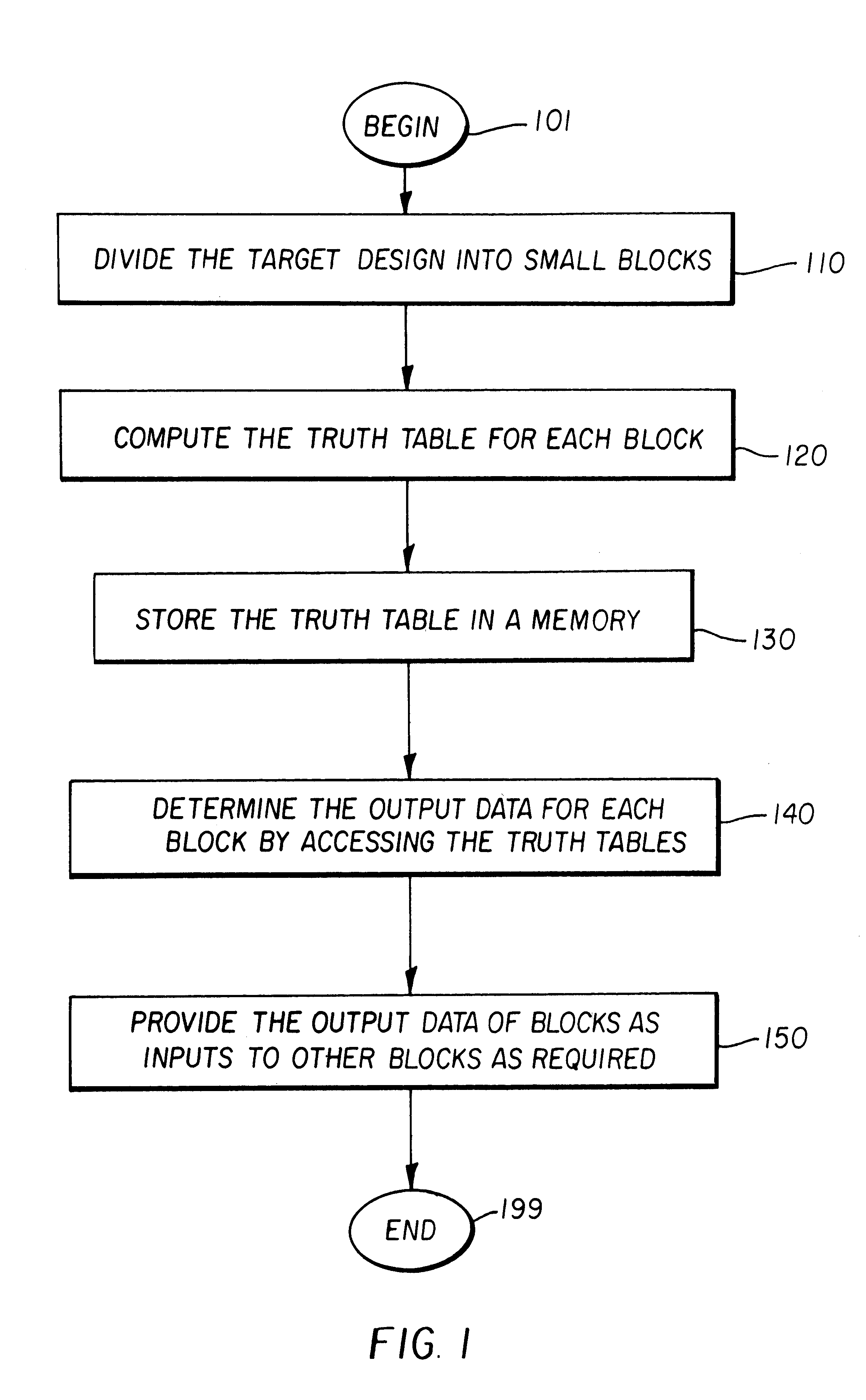Functional verification of integrated circuit designs
a technology of integrated circuits and functional verification, applied in the field of electronic design of integrated circuits, can solve the problems of inability to meet the requirements of design and fabrication, the speed of verification may not be as important in the simulation environment, and the need for several weeks to redesign and complete fabrication
- Summary
- Abstract
- Description
- Claims
- Application Information
AI Technical Summary
Benefits of technology
Problems solved by technology
Method used
Image
Examples
verification chassis 520
is configured according to the division performed by CLOG 510. Verification chassis 520 includes memory storage to store truth tables for the divided combinatorial blocks. The truth tables may be computed within Even though only one verification chassis 520 is shown in FIG. 5, it should be understood that multiple verification chassis may be employed to verify complex integrated circuits. Each verification chassis 520 may be viewed as including multiple verification units, with each verification unit evaluating one of more combinatorial logic blocks (as defined by CLOG 510). Communication scheme needs to be implemented among verification units to implement the dependencies in the target design. The communication typically needs to be intra-chassis and inter-chassis.
During the verification process, verification chassis 520 generates output data (primary or internal) corresponding to each state change in the target design. A state change may be caused either due to the logic implemen...
an example implementation
of verification chassis 520 is described first, followed by CLOG 510.
7. Verification Chassis 520
Continuing with reference to FIG. 5, an embodiment of verification chassis 520 can be implemented by modifying one of many commercially available chassis in the market place. Verification chassis 520 may include one or more boards (shown as 522-A through 522-Z), back-plane system 521, and power and cooling system 523. Verification boards 522-A through 522-Z are described with general reference to 522-X. Verification chassis 520 may contain multiple slots, with each verification board occupying a slot. Each verification board 520 may contain multiple combination logic output evaluation (CLOE) blocks shown as 523-A through 523-P. Each CLOE operates as a verification unit of one or more logic blocks.
Power and cooling system 523 provides the electrical power to the remaining components and maintains the temperature of all the components within any desired temperature in a known way. Back-plan...
an embodiment
of verification system 500 includes 16 slots in a single chassis 520. Verification boards (e.g., some of 552-A through 522-Z) can be plugged into one or more of these 16 slots. Chassis 520 may have back-plane 521 to inter-connect the 512 signals from each slot. Back-plane 510 may distribute signals from the target system, support workstation and from any other verification chassis to all the slots in this chassis. In addition the chassis may have three sets of cables (not shown in the drawings). One set would be to connect to target system 530 (for emulation environments). This cable set would carry all the primary signals to and from target system 530. The second set would be to connect to the support workstation, CLOG 510 (can be used for receiving input data and sending output data in simulation environments). This set would carry the control, initialization and support information. The last set would be to connect to other verification chassis. A cluster of verification chassis ...
PUM
 Login to View More
Login to View More Abstract
Description
Claims
Application Information
 Login to View More
Login to View More - R&D
- Intellectual Property
- Life Sciences
- Materials
- Tech Scout
- Unparalleled Data Quality
- Higher Quality Content
- 60% Fewer Hallucinations
Browse by: Latest US Patents, China's latest patents, Technical Efficacy Thesaurus, Application Domain, Technology Topic, Popular Technical Reports.
© 2025 PatSnap. All rights reserved.Legal|Privacy policy|Modern Slavery Act Transparency Statement|Sitemap|About US| Contact US: help@patsnap.com



